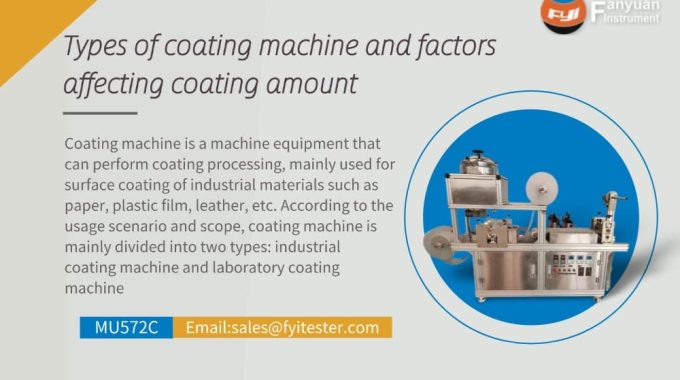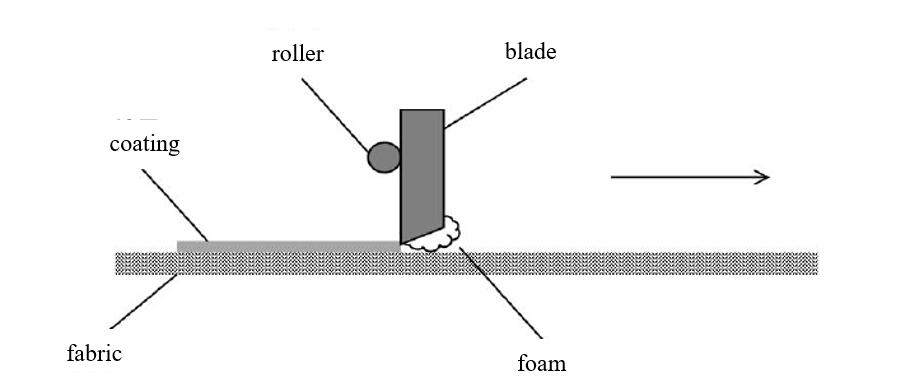
Types of coating machine and factors affecting coating amount
Contents
Introduction
Coating machine is a machine equipment that can perform coating processing, mainly used for surface coating of industrial materials such as paper, plastic film, leather, etc. According to the usage scenario and scope, coating machine is mainly divided into two types: industrial coating machine and laboratory coating machine. According to the relationship between the coating machine and the paper machine, it can be divided into internal and external types, and according to the number of coating times, it can be divided into single-layer coating and double-layer coating. In machine coating refers to the installation of a coating machine on a paper machine, which enables continuous papermaking and coating processes; External coating refers to the use of three types of coating machines, namely roll coating machine, air knife coating machine, and blade coating machine, which are independent of paper machines and are mainly used for coating operations. Coating machine also include brush type, slot type, tape coating machine, etc. Brush coating machine is the earliest coating machine to appear; Slot die coating has fast speed, high precision, and uniform wet thickness, and is commonly used in ceramic capacitors, decorative surfaces, and electronic display media. Single side coating of tape coating machine refers to coating only one side of the base paper; Double sided coating is the process of applying paint to both sides of the base paper.
Types
Roll coating machine
Roll coating machine is a type of coating machine that uses coating rollers to apply paint to the paper surface (Figure 1), and the coating inside the machine is mainly based on this type of coating machine. The coating amount can be adjusted by measuring the pressure between the rollers. When the pressure is increased, the amount of coating passing through decreases, and the coating amount also decreases. There are various types of roller coating machines, including press roll coating head, reverse roll coating head, transfer roll coating head, gravure roll coating head, etc.
The advantage of a roll type double-sided coating machine is its simple structure, which allows for simultaneous double-sided coating. As an in machine coating machine, it also has a suitable coating speed and is not prone to producing coating streaks. The disadvantage is that it is not easy to obtain the coating thickness of the air knift coating machine, nor can it achieve the smoothness and glossiness of the blade coating machine.

Air knife coating machine
Air knife coating machine uses pressurized air to adjust the coating amount and smooth the coating layer. The advantages of air knife coating are that it can obtain a thicker coating amount, the coating layer is relatively uniform, and it is not easy to break the paper during coating, especially suitable for the coating of pressure-sensitive coatings. However, since the blade of this coating machine is an invisible air knife, in order to make the coating uniform and smooth, it requires the coating to have corresponding concentration and flexibility. The disadvantage is that high solid content coating cannot be carried out, and the air knife is prone to local blockage by dry coating, resulting in coating marks.
Blade coating machine
Blade coating machine‘s principle is basically the same as that of air knife coating machine, both of which apply paint to the paper surface and scrape off excess paint, while smoothing the surface of the coating. The difference is that the blade coating machine uses a steel blade for coating and smoothing. According to the different feeding equipment, blade types, and blade installation positions, blade coating heads are divided into many types, such as hard blade coating machine, drag blade coating machine, soft blade coating machine (Figure 2), fountain type feeding blade coating machine, short residence blade coating machine, Bill blade coating machine, blade roller coating machine, etc.

The advantage of blade coating machine is that the coating surface is very smooth and not affected by the surface condition of the base paper; It does not require the coating to be soft and have strong fluidity, and can be used for high solid content coating and high-speed coating. The disadvantage is that when debris is mixed into the coating, it is easy to get stuck on the blade, leaving long streaks on the paper. In addition, the scraping blade is prone to wear and needs to be replaced frequently; The coating should generally not be too thick, and there are strict requirements for the uniformity of the thickness of the base paper.
The main factors affecting the coating amount

Blade pressure: At present, stainless steel blade is mainly used for scraping coating on the gravure roll. When coating, the pressure of the blade effect on the mesh roller is too small, and when there are impurities, it supports the blade to form gaps, resulting in uneven coating and increased coating amount.
Flatness of blade: The flatness of the blade should not warp or deform, and the coating amount should be uniform, otherwise the coating amount error will increase.
Blade sharpness: The sharpness of blade primarily depends on the perspective of blade wear, the purity of the solution, and the raw material of the blade. If it is a new blade, a sharp blade should be able to clean the adhesive layer on the gravure roll without producing threads. If the sharpness of the blade is moderate, it can effectively scrape and clean the adhesive layer, and then achieve a uniform and common coating amount; On the contrary, it leads to a greater fluctuation in the coating amount.
Blade gradient: The gradient between the contact line of the blade and the gravure roll is usually between 15° and 30°. If the gradient is too large, the blade will be pressed against the gravure roll, and the surface of the gravure roll is not smooth. When operated at high speed, it will cause a sensation or jumping of the elastic blade, causing the solution to bounce up and resulting in uneven coating amount, leading to significant differences in coating amount.
The blade moves left and right: The left and right movement of the blade has an important effect on improving the utilization rate of the blade and reducing the wear of the blade on the gravure roll. The mesh wall has less wear and tear, the mesh is relatively deep, and it can hold more fluid, which is beneficial for achieving the required coating amount. Moving the blade left and right can effectively avoid the occurrence of water streaks and make the coating amount on the wide width of the substrate more uniform.


